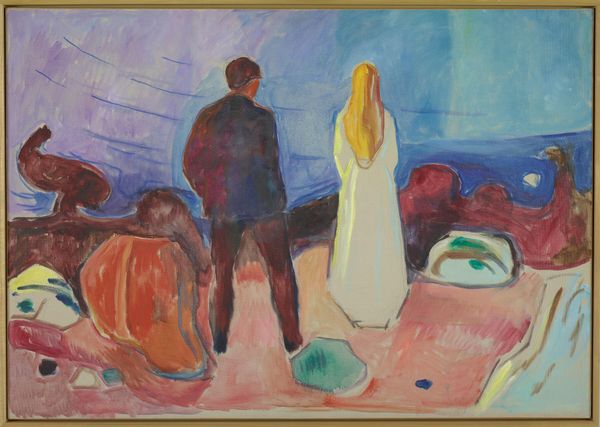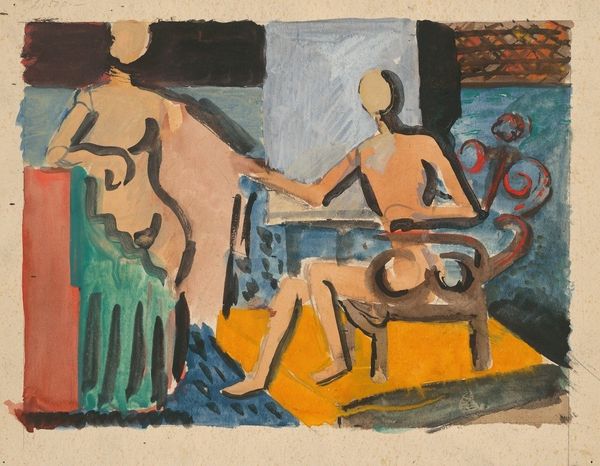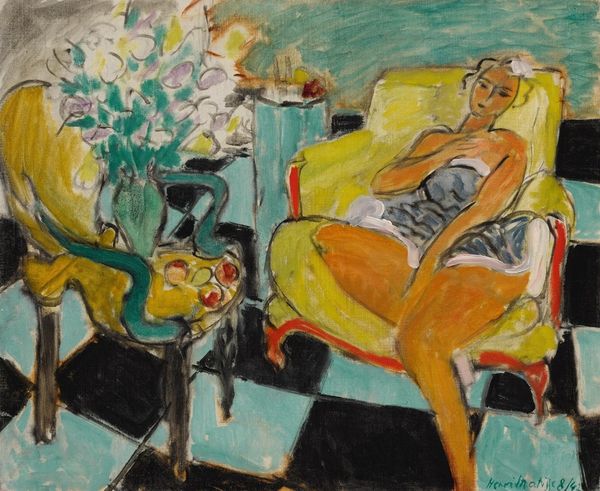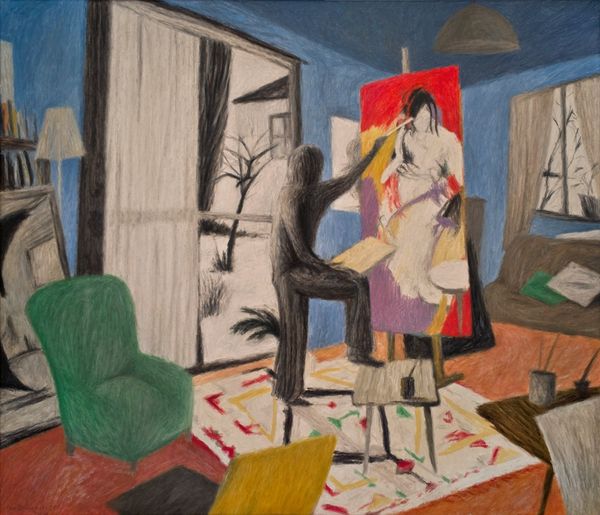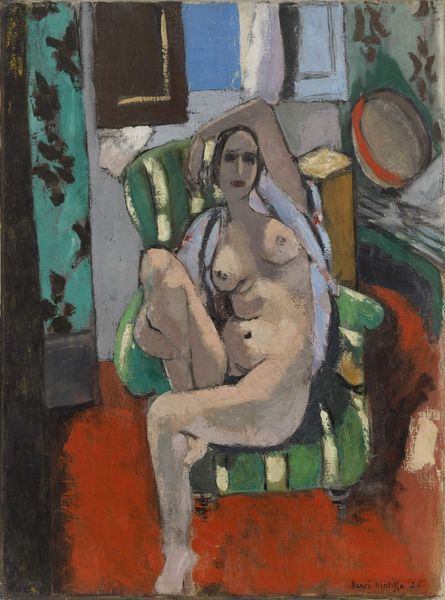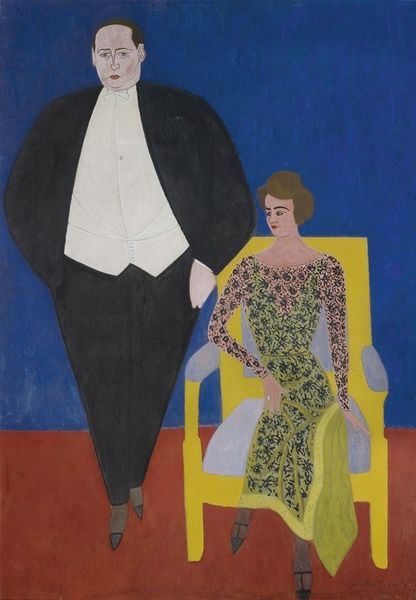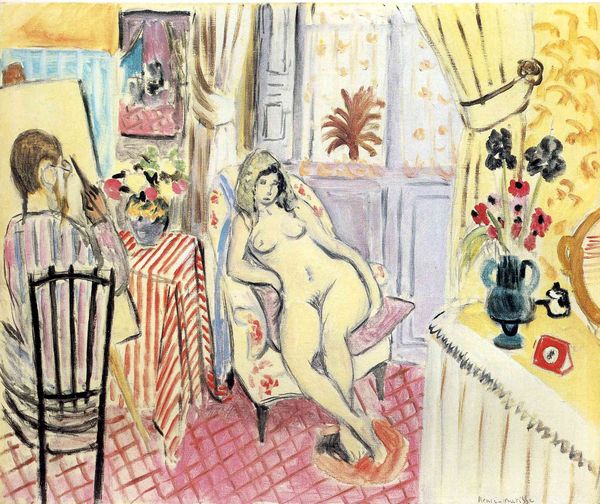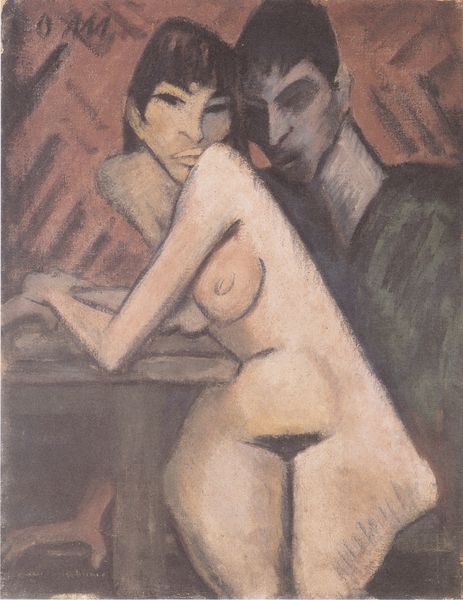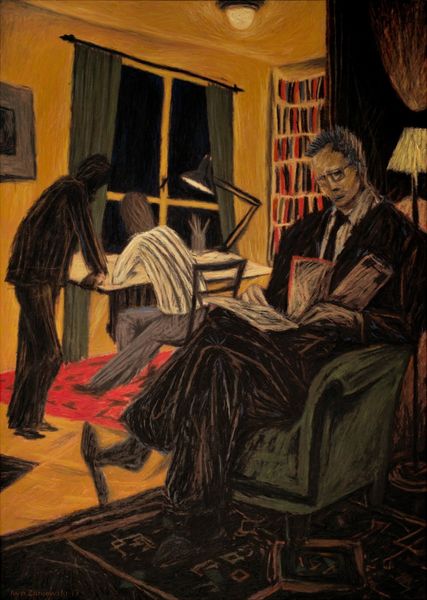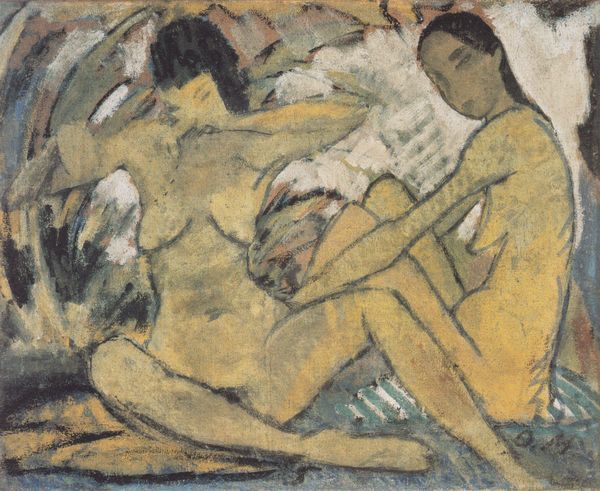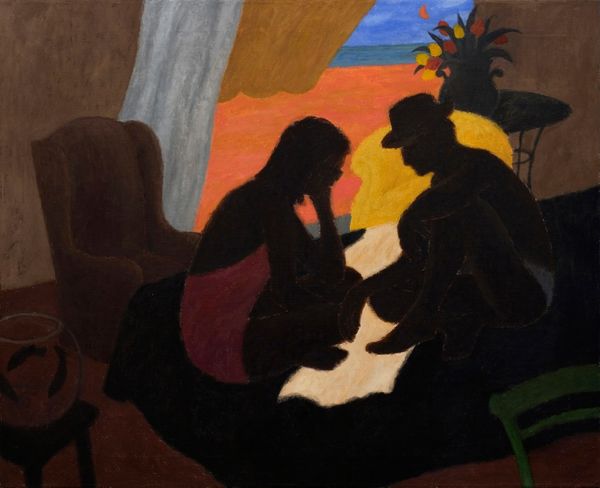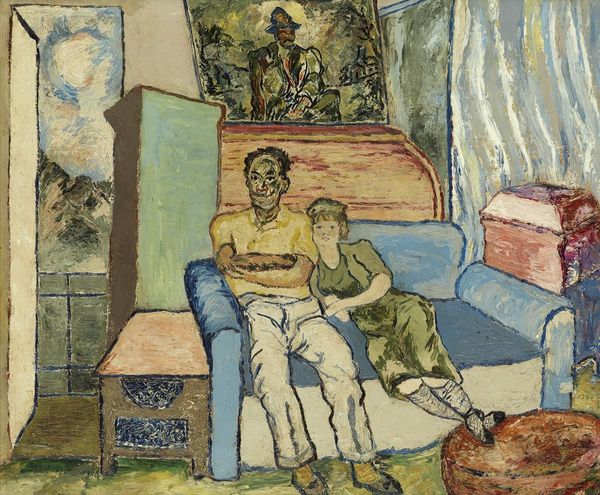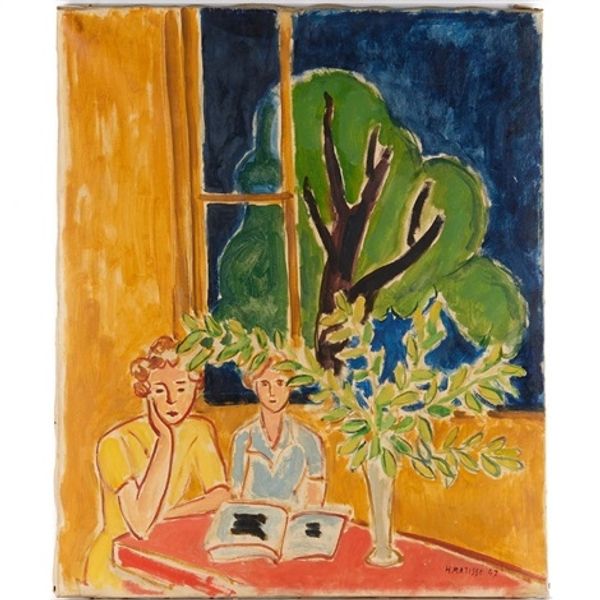
painting, watercolor
#
portrait
#
figurative
#
water colours
#
painting
#
figuration
#
watercolor
#
naive art
#
genre-painting
#
nude
Copyright: Public Domain: Artvee
Curator: "On a Sofa," painted in 1935 by Cyprián Majerník, depicts a rather awkward encounter, wouldn't you say? Majerník employed watercolor to give this figurative painting its slightly unsettling quality. Editor: My goodness, the tension is palpable. The colors are bright, almost aggressively so, yet the mood is anything but joyful. It's as if a child was asked to depict a very grown-up, and uncomfortable, situation. Curator: Precisely. It’s interesting to consider Majerník’s materials and his choices. Watercolor, a medium often associated with lightness and spontaneity, is used here to capture a scene laden with social and perhaps even economic disparities. One figure is in formal attire and one is not. It speaks volumes about the power dynamics present. Editor: The sofa, too, feels significant. The upholstery, with its jaunty spots, feels… inappropriate. Like forced gaiety. I wonder if Majerník was consciously playing with the idea of masking uncomfortable truths with superficial beauty. Is that too heavy-handed a reading? Curator: Not at all. It invites us to examine the modes of production of such imagery – how artists in that era, often dependent on patronage or the market, navigated societal expectations and perhaps their own moral quandaries. Think about what those spaces, couches and sofas meant during the 30's, after the economic crash, especially with these two bodies having what looks like opposing ideas... Editor: It's a brave work, really, pulling back the curtain, even just a little, on some unacknowledged societal arrangements, all captured in watercolor. It’s far from a glamorous painting, and yet…it's absolutely arresting. Curator: And that’s precisely where its power resides. It holds a mirror up to a specific time, a moment fraught with uncertainty, unease, and complicated interactions that continue to echo today. The means of production allow for insight and contemplation on a very interesting part of history, when art and people start taking risks. Editor: You've given me a fresh lens through which to view it, focusing not just on the subject matter, but on how the choices around materiality amplify the story being told. I won't look at watercolors the same way again, at least not for today!
Comments
No comments
Be the first to comment and join the conversation on the ultimate creative platform.
